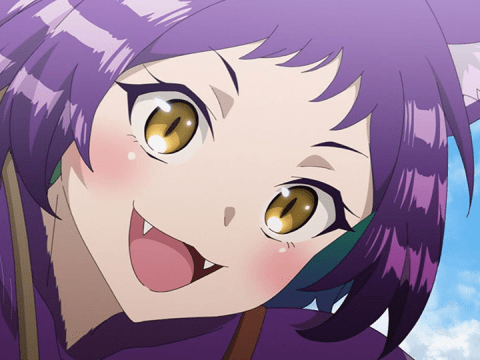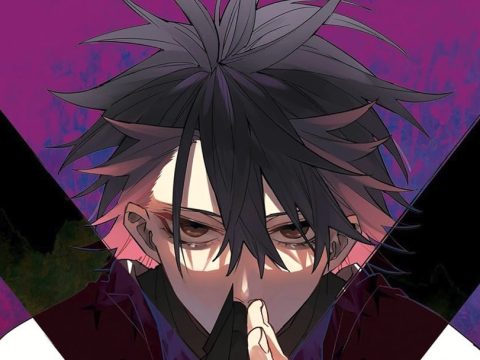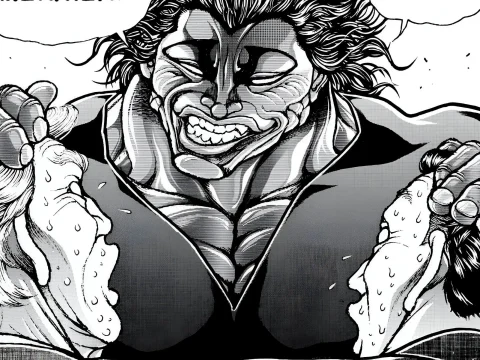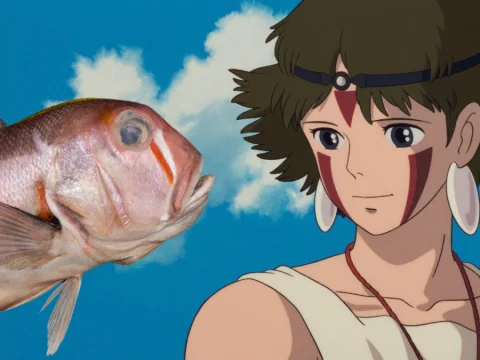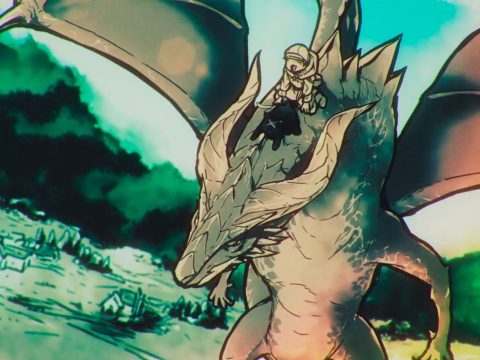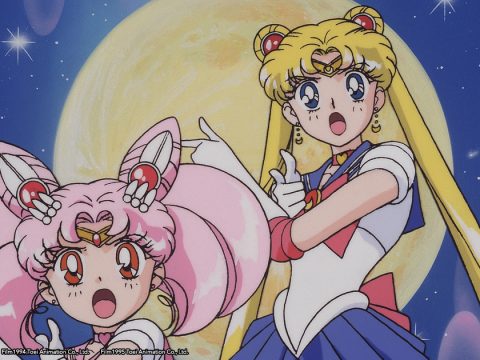 Astro Boy is something that few anime fans nowadays know about, even fewer watch or read, and even fewer still actively enjoy. I want to believe that the release of Frederik L. Schodt’s latest book, The Astro Boy Essays: Osamu Tezuka, Mighty Atom, and the Manga/Anime Revolution (new from Stone Bridge Press) will change that. Fred has been writing about anime and manga in America since before the terms were frequently used by anyone here. He is perhaps the top English-language authority on the subject of the “God of Manga and Anime•bCrLf Osamu Tezuka and his best-known creation Astro Boy, having known Tezuka personally for many years and translated all of the Astro Boy manga into English. The Astro Boy Essays is a fantastic resource, but will the majority of US anime fans care, even though they should?
Astro Boy is something that few anime fans nowadays know about, even fewer watch or read, and even fewer still actively enjoy. I want to believe that the release of Frederik L. Schodt’s latest book, The Astro Boy Essays: Osamu Tezuka, Mighty Atom, and the Manga/Anime Revolution (new from Stone Bridge Press) will change that. Fred has been writing about anime and manga in America since before the terms were frequently used by anyone here. He is perhaps the top English-language authority on the subject of the “God of Manga and Anime•bCrLf Osamu Tezuka and his best-known creation Astro Boy, having known Tezuka personally for many years and translated all of the Astro Boy manga into English. The Astro Boy Essays is a fantastic resource, but will the majority of US anime fans care, even though they should?
Without Astro Boy and Osamu Tezuka, anime and manga as we know them simply wouldn’t exist. Astro Boy, or Tetsuwan Atom (“Mighty Atom•bCrLf) as it’s known in Japan, is often credited as being the first “modern•bCrLf anime, having begun in 1963. The 1958 film Panda and the Magic Serpent probably deserves that distinction, but Astro Boy was the first weekly anime TV series to be shown in America, so it was a first for us anyway.
The general premise has not changed very much over the years, even if the names used have: in the future, a scientist’s young son is accidentally killed, prompting the scientist to build a robot in the boy’s image (thus officially qualifying him as a “mad•bCrLf scientist). Another less crazy scientist adopts the robot to teach it how to behave like a real boy • and also to fight against bad guys should the need arise on a weekly basis. The robot is Astro Boy and he’s the strongest robot there is, gifted with powers such as flight, super strength (“100,000 horsepower•bCrLf), enhanced senses, and so on. More importantly, he’s also the most advanced, with a computer brain capable of thinking and feeling emotions.
 Still, given the apparent lack of interest—the US broadcast of the gorgeously animated 2003 Astro Boy TV series was canceled almost immediately—it’s astounding that Dark Horse Comics released all 23 volumes of the manga, Right Stuf released 104 episodes of the original 1963 TV series, Manga Video released the 1980 TV series, and Sony released the 2003 TV series. More incredible is that—aside from the heavily edited dub-only release of the 2003 series—the DVDs offer both Japanese and English audio and the manga is relatively unedited despite being flipped to read from left to right.
Still, given the apparent lack of interest—the US broadcast of the gorgeously animated 2003 Astro Boy TV series was canceled almost immediately—it’s astounding that Dark Horse Comics released all 23 volumes of the manga, Right Stuf released 104 episodes of the original 1963 TV series, Manga Video released the 1980 TV series, and Sony released the 2003 TV series. More incredible is that—aside from the heavily edited dub-only release of the 2003 series—the DVDs offer both Japanese and English audio and the manga is relatively unedited despite being flipped to read from left to right.
Hopefully you DO like Astro Boy and Osamu Tezuka, or if you’re interested in learning about them—and you SHOULD be—then The Astro Boy Essays is for you. Don’t let the term “essays•bCrLf deter you; Schodt’s writing is informative without being dry or overly technical like an academic journal or textbook.
There are eight essays in all. “A National Icon•bCrLf establishes the popularity of Astro Boy/Mighty Atom in Japan as it chronicles the events that happened in celebration of his fictional date of birth in 2003. Parades, fireworks displays, robotics exhibits, and a flower display of Mighty Atom made from 100,000 tulips were just part of the nationwide pageantry. But even in Japan, the attachment to Mighty Atom that the baby boomers had is not entirely carried over to the younger generations, since the new series wasn’t all that successful there either.
“How •Mighty Atom’ Came to Be•bCrLf and “Designing a World•bCrLf discuss the events leading up to the 1952 manga debut of the character and the influences on Tezuka’s work: World War II, the American postwar occupation of Japan, classical music, and the animated works of Walt Disney, Max Fleischer, and Paul Terry. The productions of the all-female musical theatrical troupe known as the Takarazuka Revue, particularly their production of Pinocchio, also heavily influenced Mighty Atom’s creation as well as his androgynous look that would later become a driving force behind the pretty boy/bishonen aesthetic of today. Speaking of driving forces, Osamu Tezuka was clearly superhuman: he not only worked on about five different manga titles while attending medical school, but he could also read 300 pages of text in 10 minutes and play the piano. Even so, Tezuka’s need for production assistants to keep up with his work schedule not only trained a generation of manga creators who would become famous themselves, but established the modern method for manga production employed to this day.

All American anime fans would benefit from reading the essays “Mighty Atom: TV Star•bCrLf and “Go, Go, Go Astro Boy!•bCrLf These chronicle the tale of how the Mighty Atom anime series—and thus the entire modern anime industry—got its start, as well as how the series came over to America. On top of all the manga he’d make, Osamu Tezuka started up an animation studio where he—at first—scripted, storyboarded, and directed for the cartoons. Apparently, the secret behind being able to accomplish this much work is to never sleep. For better or worse, Tezuka’s focus on producing the Mighty Atom anime series as quickly and cheaply as possible while also merchandising it and selling the show overseas lay the foundation for the anime industry as it exists today.
 For the devout fan, “An Interface Between Man and Robot•bCrLf and “A Medley of Messages•bCrLf focus on the deeper messages present within Astro Boy. There’s maturity to the Astro Boy manga that you may not expect, and perhaps that’s why Osamu Tezuka’s work hasn’t really taken off in the US despite all the critical acclaim. Fans in America don’t generally take kindly to Tezuka’s fondness for throwing silly gags into otherwise serious stories or, for that matter, telling such stories using Betty Boop-looking characters in the first place. Nevertheless, whether in Japan or America, Osamu Tezuka is best known for creating Astro Boy, a fact that the final essay, “A Complicated Relationship•bCrLf dwells upon. Revolutionary as Astro Boy was, Tezuka used the money he’d made from that to finance truly experimental titles such as Phoenix. While it’s excellent to see so much of Astro Boy available in the US, where’s the love for Black Jack? Proud as he was of Astro Boy, it’s a mistake to equate Osamu Tezuka solely with that.
For the devout fan, “An Interface Between Man and Robot•bCrLf and “A Medley of Messages•bCrLf focus on the deeper messages present within Astro Boy. There’s maturity to the Astro Boy manga that you may not expect, and perhaps that’s why Osamu Tezuka’s work hasn’t really taken off in the US despite all the critical acclaim. Fans in America don’t generally take kindly to Tezuka’s fondness for throwing silly gags into otherwise serious stories or, for that matter, telling such stories using Betty Boop-looking characters in the first place. Nevertheless, whether in Japan or America, Osamu Tezuka is best known for creating Astro Boy, a fact that the final essay, “A Complicated Relationship•bCrLf dwells upon. Revolutionary as Astro Boy was, Tezuka used the money he’d made from that to finance truly experimental titles such as Phoenix. While it’s excellent to see so much of Astro Boy available in the US, where’s the love for Black Jack? Proud as he was of Astro Boy, it’s a mistake to equate Osamu Tezuka solely with that.
As a dedicated fan of Astro Boy who doesn’t personally know any others, I’m quite ecstatic that Fred Schodt wrote The Astro Boy Essays in the first place. Not only is it an excellent resource on Astro Boy, but true to its lengthy subtitle, it also serves as a biography on the life of Osamu Tezuka and a historical overview of the development of modern Japanese animation and comics.
After all, the subjects are inseparable.
[Excerpted from the December 2008 issue of Otaku USA magazine]


